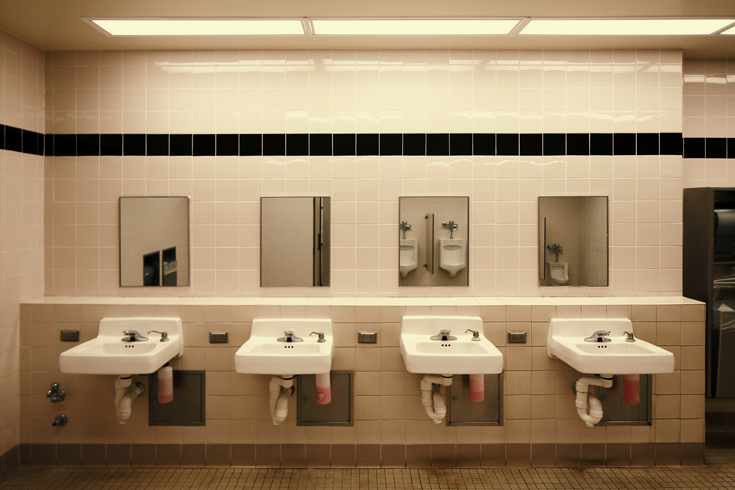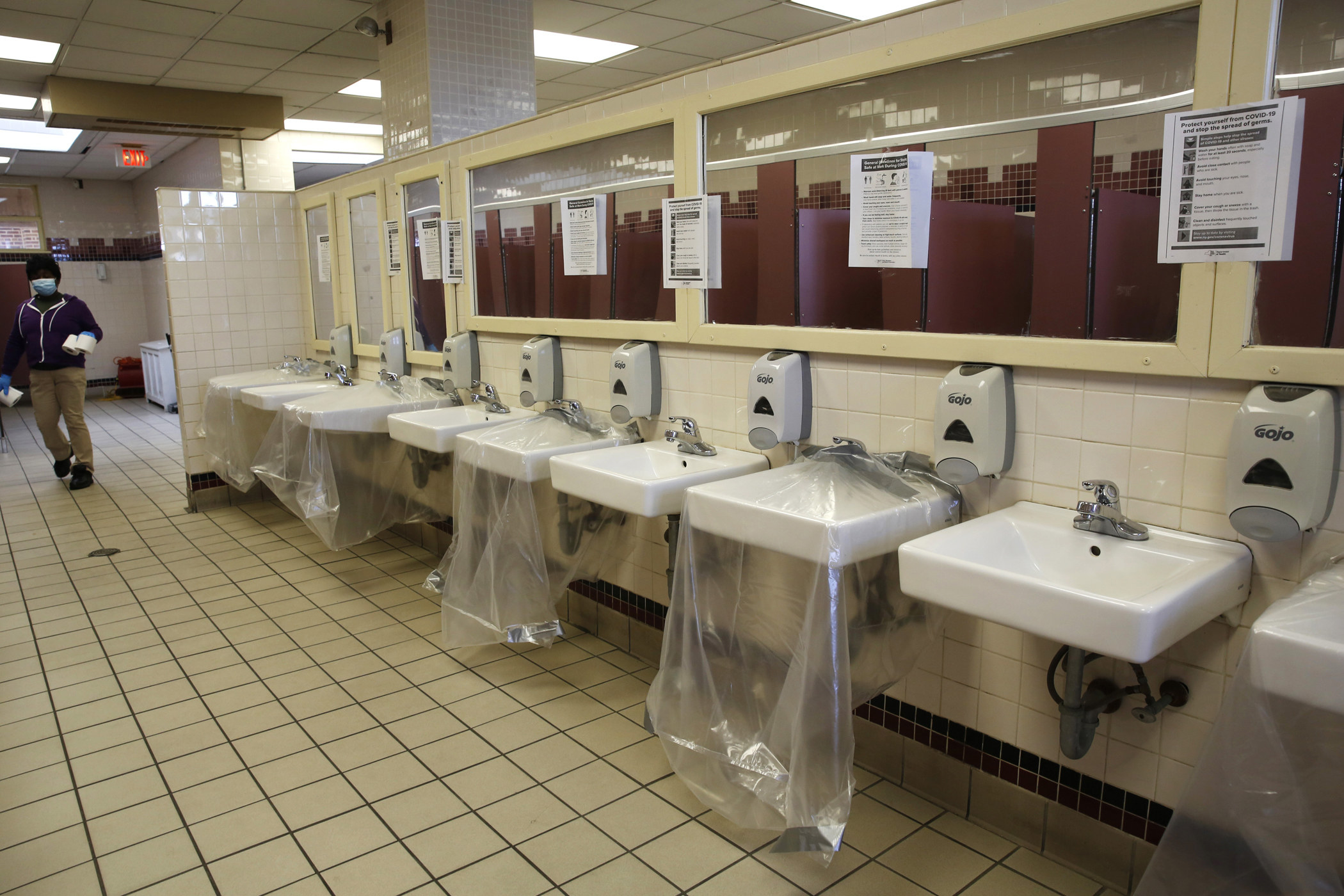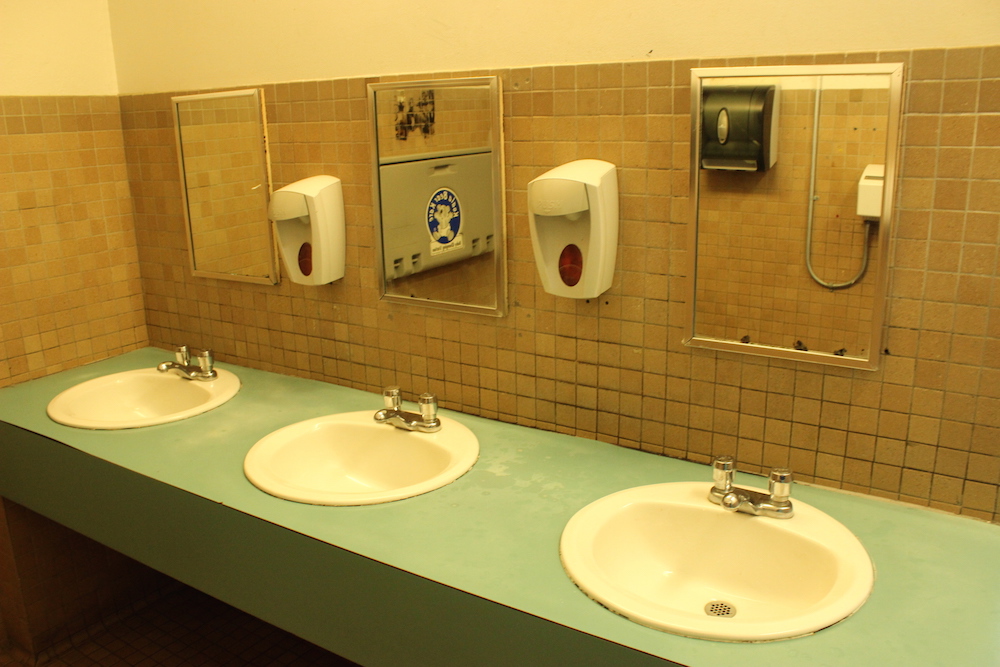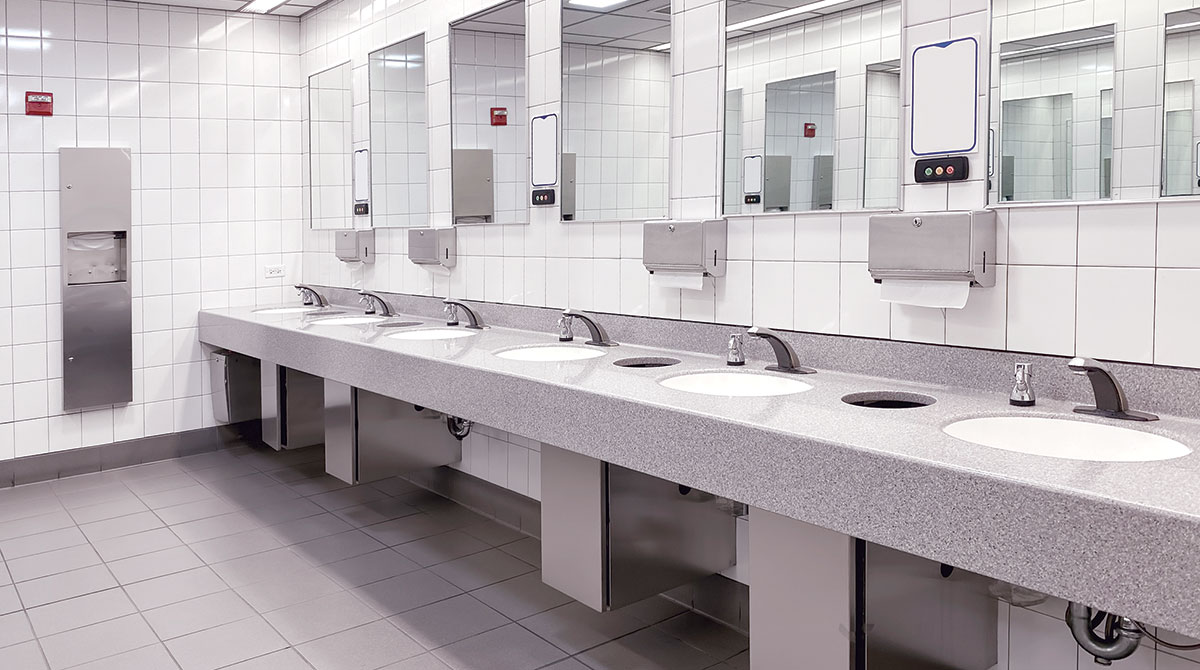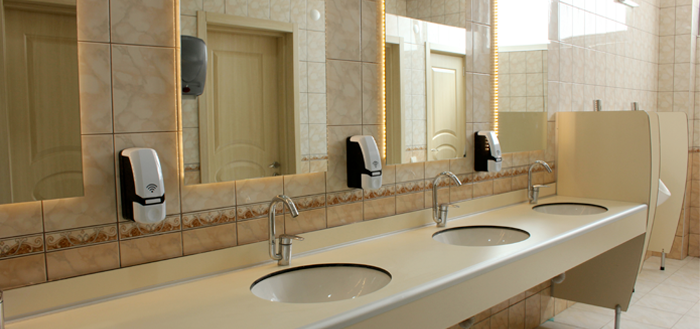The Role of Public Bathroom Sinks
Maintaining proper hygiene is crucial, especially in public spaces. Public bathroom sinks play a vital role in promoting cleanliness and preventing the spread of germs and diseases. Let’s discuss the significance of hygiene and explore the essential role that public bathroom sinks play in ensuring a sanitary environment.
- Preventing the Spread of Germs: Public bathroom sinks act as the first line of defense against the spread of germs. They provide individuals with the opportunity to wash their hands thoroughly, removing bacteria and viruses that may have been acquired during daily activities. By encouraging proper hand hygiene, public bathroom sinks contribute to reducing the transmission of illnesses, particularly in high-traffic areas such as malls, restaurants, and airports.
- Promoting Personal Hygiene Habits: Public bathroom sinks serve as a reminder and facilitator of personal hygiene habits. From handwashing to brushing teeth, these sinks encourage individuals to prioritize their cleanliness and well-being. By providing a convenient and accessible space for personal hygiene routines, public bathroom sinks contribute to overall health and well-being.
- Enhancing User Satisfaction: Clean and well-maintained public bathroom sinks enhance user satisfaction. When individuals encounter clean and functional sinks, they feel more comfortable and confident in the establishment’s hygiene standards. This positive experience can lead to increased customer satisfaction, improved reputation, and higher footfall for businesses.
- Creating a Positive Image: Public bathroom sinks have the power to shape the overall perception of a public space. Clean and well-designed sinks contribute to a positive image, conveying a sense of professionalism, care, and attention to detail. This can significantly impact users’ perception of the establishment and influence their decision to visit or recommend it to others.
- Encouraging Social Responsibility: Public bathroom sinks also promote social responsibility by fostering a culture of cleanliness and respect for others. By providing the necessary facilities for handwashing and personal hygiene, they encourage individuals to take responsibility for their own cleanliness and considerate behavior towards others. This, in turn, contributes to a healthier and more considerate society as a whole.

Designing Efficient and Accessible Public Bathroom Sink Solutions
Efficiency and accessibility are key factors to consider when designing public bathroom sink solutions. Let’s discuss the importance of these aspects and discuss how well-designed sinks can enhance the overall user experience in public restrooms.
- Space Optimization: Efficient design is crucial in public bathrooms, where space is often limited. By utilizing smart design elements such as compact sinks, wall-mounted faucets, and integrated soap dispensers, designers can maximize the available space and ensure that users have enough room to comfortably access the sink area. This not only improves the flow of traffic but also allows for a more pleasant and efficient experience for all users.
- Accessibility for All: Public bathroom sinks should be designed with accessibility in mind to accommodate individuals with disabilities or mobility limitations. Features such as lower countertops, lever-operated faucets, and automatic hand dryers can make the sink area more accessible and user-friendly for everyone. By prioritizing inclusivity in sink design, public spaces become more welcoming and inclusive for all individuals.
- User-Friendly Controls: Efficient sink design includes user-friendly controls that are intuitive and easy to operate. Faucets with motion sensors or touchless activation not only improve hygiene but also enhance user convenience. Additionally, incorporating features such as temperature control and adjustable water pressure can cater to individual preferences and ensure a comfortable experience for all users.
- Durability and Maintenance: Efficient sink design also takes into account the durability and maintenance requirements of the fixtures. Using high-quality materials, such as stainless steel or solid surface countertops, ensures longevity and minimizes the need for frequent repairs or replacements. Furthermore, incorporating features such as easy-to-clean surfaces and self-cleaning mechanisms simplifies maintenance and reduces downtime for cleaning staff.
- Sustainability and Water Conservation: Efficient sink design goes hand in hand with sustainability and water conservation. By incorporating features such as low-flow faucets, sensor-activated water flow, and water-saving technologies, designers can significantly reduce water consumption in public restrooms. This not only contributes to environmental conservation but also helps establishments save on water bills in the long run.
Innovations in Public Bathroom Sink Technology
Advancements in technology have revolutionized various aspects of our lives, including public bathroom sinks. We will explore the latest innovations in public bathroom sink technology and how they enhance the overall user experience in these facilities.
Touchless Technology: One of the significant innovations in public bathroom sinks is touchless technology. Sensor-activated faucets and soap dispensers eliminate the need for physical contact, reducing the spread of germs and improving hygiene. This technology not only enhances user convenience but also contributes to a cleaner and more sanitary environment.
Integrated Smart Features: Modern public bathroom sinks now come equipped with integrated smart features. These features include LED lighting, temperature control, and water flow adjustment. LED lighting enhances visibility and aesthetics, while temperature control and adjustable water flow cater to individual preferences, ensuring a comfortable experience for users.
Hygiene Maintenance Systems: Innovative sink designs now incorporate hygiene maintenance systems. These systems include self-cleaning features, automatic hand dryers, and antimicrobial surfaces. Self-cleaning sinks, for example, use UV light or other disinfection mechanisms to eliminate germs and bacteria, ensuring a clean and hygienic environment for users.
Water Conservation Technologies: With a growing focus on sustainability, water conservation technologies have become a vital aspect of public bathroom sink innovations. These technologies include low-flow faucets, water-saving sensors, and greywater recycling systems. By reducing water consumption, these innovations promote environmental conservation and help establishments save on water costs.
User Experience Enhancements: Innovative sink designs also prioritize user experience enhancements. This includes features such as adjustable sink heights to accommodate users of different heights or mobility devices, built-in hand sanitizer dispensers for added convenience, and integrated mirrors or vanity areas for multitasking. These enhancements contribute to a more comfortable and user-friendly experience for all individuals.
Promoting Sustainability in Public Bathroom Sinks
As the global focus on sustainability grows, promoting eco-friendly practices in public spaces has become increasingly important. Let’s see how public bathroom sinks can contribute to sustainability efforts through water conservation and other eco-friendly practices.
Low-Flow Faucets: One of the most effective ways to promote water conservation in public bathroom sinks is by installing low-flow faucets. These faucets are designed to reduce water flow while maintaining sufficient pressure for handwashing. By using less water per use, establishments can significantly reduce their water consumption and contribute to water conservation efforts.
Sensor-Activated Water Flow: Sensor-activated water flow is another eco-friendly practice that promotes sustainability in public bathroom sinks. These sensors detect when hands are placed under the faucet, activating the water flow for the duration required for handwashing. Once hands are removed, the water automatically shuts off, preventing unnecessary water wastage.
Greywater Recycling Systems: Innovative public bathroom sink designs now incorporate greywater recycling systems. Greywater refers to wastewater generated from sinks, showers, and laundry. These systems collect and treat greywater, making it suitable for non-potable uses such as flushing toilets or irrigation. By utilizing greywater, establishments can reduce their reliance on freshwater sources and conserve water.
Eco-Friendly Materials: Choosing eco-friendly materials for public bathroom sinks is another sustainable practice. Opting for materials such as recycled glass, bamboo, or sustainably sourced wood for sink countertops and fixtures can significantly reduce the environmental impact. Additionally, using non-toxic and biodegradable cleaning products further promotes eco-friendly practices.
Education and Awareness: Promoting sustainability in public bathroom sinks also involves educating users about the importance of water conservation and eco-friendly practices. Displaying informative signage or providing educational materials in restroom facilities can raise awareness and encourage individuals to adopt responsible water usage habits.
Maintaining Cleanliness and Sanitation in Public Bathroom Sinks
Maintaining cleanliness and sanitation in public bathroom sinks is essential to ensure a safe and hygienic environment for users. Let’s address the challenges faced in maintaining cleanliness in public bathroom sinks and discuss the solutions to overcome them.
Regular Cleaning and Maintenance: One of the primary challenges in maintaining cleanliness in public bathroom sinks is the high volume of usage. Regular cleaning and maintenance schedules are crucial to address this challenge effectively. Establishments should establish protocols for frequent cleaning of sinks, faucets, countertops, and surrounding areas to prevent the buildup of grime, soap scum, and bacteria.
Proper Drainage Systems: Effective drainage systems are essential to maintain cleanliness in public bathroom sinks. Ensuring that sinks have properly functioning drains and are regularly inspected for blockages helps prevent stagnant water, odors, and potential hygiene issues. Routine checks and maintenance of drainage systems are necessary to address this challenge.
Adequate Supply of Soap and Paper Towels: A lack of soap or paper towels can hinder proper hand hygiene in public bathroom sinks. Establishments should ensure a constant supply of soap and paper towels, regularly checking and restocking these essential items. Automatic soap dispensers and hand dryers can also help alleviate this challenge by providing a touchless and continuous supply.
User Education and Awareness: Educating users about the importance of cleanliness and proper use of public bathroom sinks is crucial. Establishments can display signage or provide instructions on proper handwashing techniques, disposing of waste, and maintaining cleanliness. User awareness campaigns can encourage responsible behavior and contribute to a cleaner and more hygienic environment.
Regular Inspection and Maintenance: Regular inspection and maintenance of public bathroom sinks are essential to address any issues promptly. Establishments should have a maintenance schedule that includes checking for leaks, repairing faulty faucets or soap dispensers, and addressing any other concerns that may arise. This proactive approach ensures that sinks are always in optimal working condition.
Experts suggest public toilets and offices should be re-engineered
Concrete Sinks for the Restaurant and Public Restrooms by Sonoma
Coronavirus: Is It Safe To Use Public Restrooms During The Pandemic?
Observations Design for Public Restrooms
Pennsylvania Introduces Bathroom Bill for Drivers Transport Topics
Aquatica Sibylla Public Stone Bathroom Sink
Blue-lit bathrooms make it hard for drug users to see veins but
Would You Pay $1 to Use a Clean Public Restroom?
Related Posts:
- Stopper Stuck In Bathroom Sink
- Installing Bathroom Sink Drain P Trap
- Mites In Bathroom Sink
- Best Bathroom Sink Drain
- Schoolhouse Bathroom Sink
- DIY Under Bathroom Sink Cabinet
- Bathroom Sink With Mirror
- Dornbracht Bathroom Sink Faucets
- Double Faucet Bathroom Sink Vanity
- How To Open A Clogged Bathroom Sink Drain



